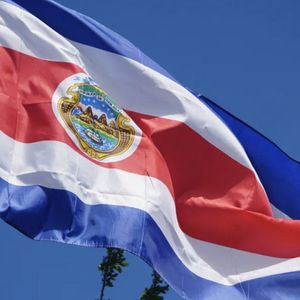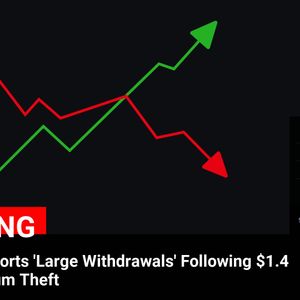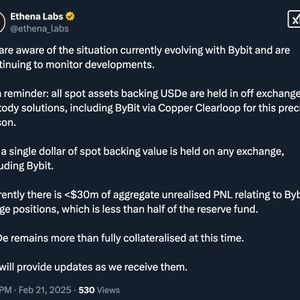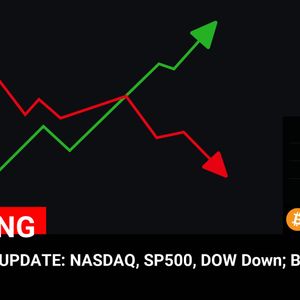The financial world is holding its breath as the Reserve Bank of New Zealand (RBNZ) gears up for its upcoming interest rate decision. All eyes are on Wednesday, February 19th, 2025, when the RBNZ is widely anticipated to announce another significant move – a 50 basis points (bps) cut to the Official Cash Rate (OCR). This potential reduction, bringing the OCR down to 3.75%, comes amidst growing concerns about a deepening economic slowdown in New Zealand. But what does this mean for the New Zealand Dollar and the broader financial landscape? Let’s dive into the details. RBNZ Interest Rate Decision: A Pre-emptive Strike Against Economic Slowdown? The anticipated 50 bps rate cut is not happening in isolation. It’s the latest step in a series of monetary policy adjustments by the RBNZ. Since August of last year, the central bank has already implemented a cumulative 125 bps of cuts. This aggressive easing cycle signals the RBNZ’s proactive approach to combat the emerging economic headwinds. Economists across the board, as highlighted in a Reuters poll, are in consensus about this impending rate cut. But the real question isn’t just about *whether* the cut will happen, but *what’s next*? Governor Adrian Orr himself hinted at this move back in November, stating that further OCR reductions were likely “early next year” if economic conditions evolved as projected. His confidence in domestic inflation pressures easing further solidified expectations for this February cut. The backdrop for this dovish stance is clear: concerns over a tangible economic slowdown and the need to steer inflation back within the RBNZ’s target range of 1% to 3%. Decoding the Economic Slowdown: Key Indicators The rationale behind the expected rate cut is firmly rooted in recent economic data. New Zealand’s economic performance paints a picture of deceleration: Inflation Moderation: The annual Consumer Price Index (CPI) growth slowed to 2.2% in Q3 2024, a significant drop from the previous quarter’s 3.3%. While this aligns with forecasts, it underscores the cooling inflationary pressures. Recessionary Territory: New Zealand officially entered a recession in Q3, with a 1% GDP contraction, following a revised 1.1% contraction in the prior quarter. This double whammy of negative GDP growth is a serious cause for concern. Subdued Economic Activity: Even after front-loading policy easing in November, the RBNZ acknowledged that “economic activity in New Zealand is subdued,” leaving the door open for further monetary easing. Market analysts at BBH suggest that the swaps market anticipates the policy rate bottoming out near 3.25% within the next year. This is even more dovish than the RBNZ’s own projection of a 3.55% peak OCR in December 2025. The upcoming Monetary Policy Statement (MPS) and updated economic projections will be crucial in deciphering the RBNZ’s future policy trajectory. New Zealand Dollar’s Rollercoaster Ride: What to Expect Post-Decision? The New Zealand Dollar (NZD) is currently navigating a delicate balance. Leading up to the RBNZ announcement, the NZD/USD pair has climbed to a four-week high of 0.5750. This upward momentum is partly fueled by easing global tensions and a general US Dollar (USD) downtrend. However, this upward trajectory could be short-lived. Here’s a breakdown of potential scenarios for the New Zealand Dollar based on the RBNZ’s decision and forward guidance: RBNZ Stance Potential NZD Reaction Dovish (Hints at further aggressive cuts, downward revision of OCR forecasts) Sharp NZD depreciation against USD and other major currencies. Potential reversal from monthly highs. Neutral to Hawkish (Signals slowing pace of easing, maintains OCR projections, hints at potential future hikes if inflation rebounds) NZD could experience a fresh upside across the board. Strength against USD and other currencies. Technical Outlook for NZD/USD: Trading the News Dhwani Mehta, Bitcoin World’s Senior Analyst, provides a technical perspective for traders navigating the RBNZ announcement: “The technical indicators currently suggest upside risks for the NZD/USD. A Bull Cross on the daily chart last Friday, coupled with the Relative Strength Index (RSI) comfortably above 50, points towards potential bullish momentum, despite recent dips.” Key Technical Levels to Watch: Resistance: Initial resistance at the 21-day Simple Moving Average (SMA) around 0.5814, followed by the November 29, 2024 high of 0.5930, and then the psychological 0.6000 level. Support: Strong support near 0.5660, a confluence of the 21-day and 50-day SMAs. A break below this could trigger a slide towards the February 3 low of 0.5516. Traders should closely monitor these levels and the RBNZ’s communication to gauge the New Zealand Dollar’s next move. Understanding the RBNZ’s Mandate: Central Banking 101 To fully grasp the significance of the RBNZ’s actions, it’s crucial to understand the fundamental role of a central bank. Central banks, like the RBNZ, are the guardians of price stability. Their primary mandate is to manage inflation and deflation to ensure a healthy and stable economy. What Tools Do Central Banks Use? The primary tool in a central bank’s arsenal is the policy rate, also known as the interest rate or benchmark rate. By adjusting this rate, central banks influence borrowing costs and overall economic activity. Here’s how it works: Raising Interest Rates (Monetary Tightening): Used to combat inflation. Higher rates make borrowing more expensive, cooling down demand and curbing price increases. This is generally NZD bullish. Cutting Interest Rates (Monetary Easing): Used to stimulate economic growth or counter deflationary pressures. Lower rates make borrowing cheaper, encouraging spending and investment. This is generally NZD bearish. Hawks vs. Doves: The Internal Dynamics of Monetary Policy Within central banks, there are often differing viewpoints on monetary policy. These are broadly categorized as: Hawks: Favor tighter monetary policy (higher interest rates) to prioritize inflation control, even if it means slower economic growth. Doves: Advocate for looser monetary policy (lower interest rates) to stimulate economic growth, even if it means tolerating slightly higher inflation. The Governor or Chairman of the central bank plays a crucial role in building consensus among these viewpoints and steering monetary policy effectively. Their public speeches and communications are closely watched for clues about the future policy direction. The Blackout Period: Central Bank Silence Before the Storm Leading up to a policy meeting, central bank members enter a “blackout period.” During this time, they refrain from public communication to avoid influencing market expectations and ensure a level playing field for all participants. This silence is broken only with the official policy announcement and subsequent press conference by the Governor. Conclusion: Brace for Impact – NZD and the RBNZ Decision The RBNZ’s upcoming interest rate decision is a pivotal moment for the New Zealand economy and the New Zealand Dollar. The widely expected 50 bps cut underscores the central bank’s commitment to addressing the deepening economic slowdown. However, the market’s reaction will hinge not just on the rate cut itself, but crucially on the RBNZ’s forward guidance and updated economic projections. Will they signal further aggressive easing, or hint at a pause? The answer will dictate the New Zealand Dollar’s trajectory and shape the near-term outlook for the Kiwi economy. Traders and investors should prepare for potential volatility and closely monitor the RBNZ’s communication for crucial clues. To learn more about the latest Forex market trends, explore our article on key developments shaping US Dollar and interest rates liquidity.



















